As of summer 2023, the research group has moved to the Ellison Institute. It is part of the Physical Sciences and Engineering Team, which is under the direction of Prof. Armani.
The over-arching mission is to develop novel nonlinear materials and integrated optical devices that can be used in understanding disease progression, microscopy, and diagnostics. Our research efforts span multiple fields including materials synthesis, integrated optics and instrumentation development, and disease diagnostics. We also perform a significant amount of computational work to support our experimental efforts. To enable this research breadth, our group members include researchers with diverse academic backgrounds. Our research labs are located at the Ellison Institute, and we also have collaborations and utilize facilities with other universities in Los Angeles and across the US.
-
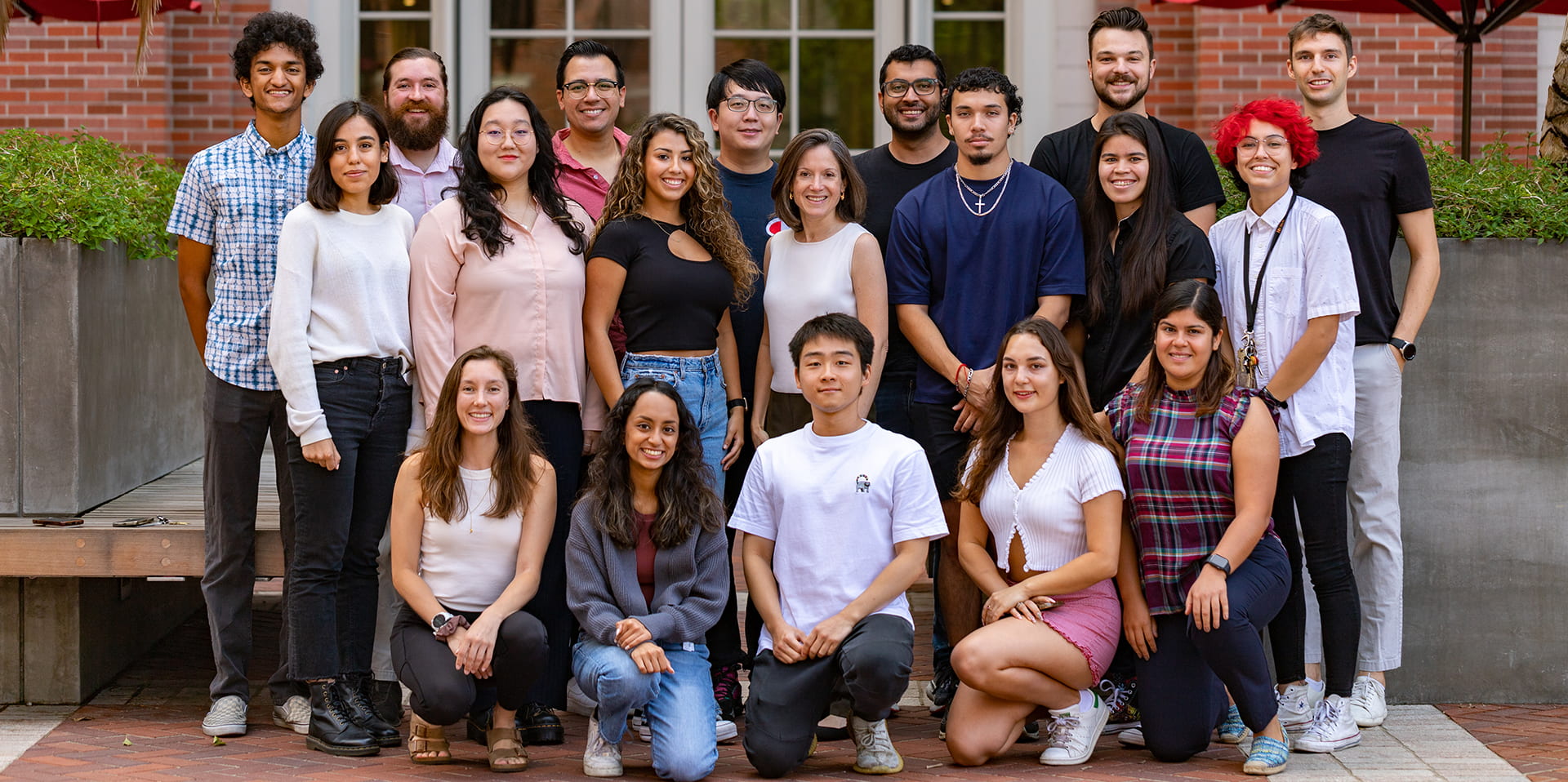 Fall 2022 Group Photo
Fall 2022 Group Photo
-
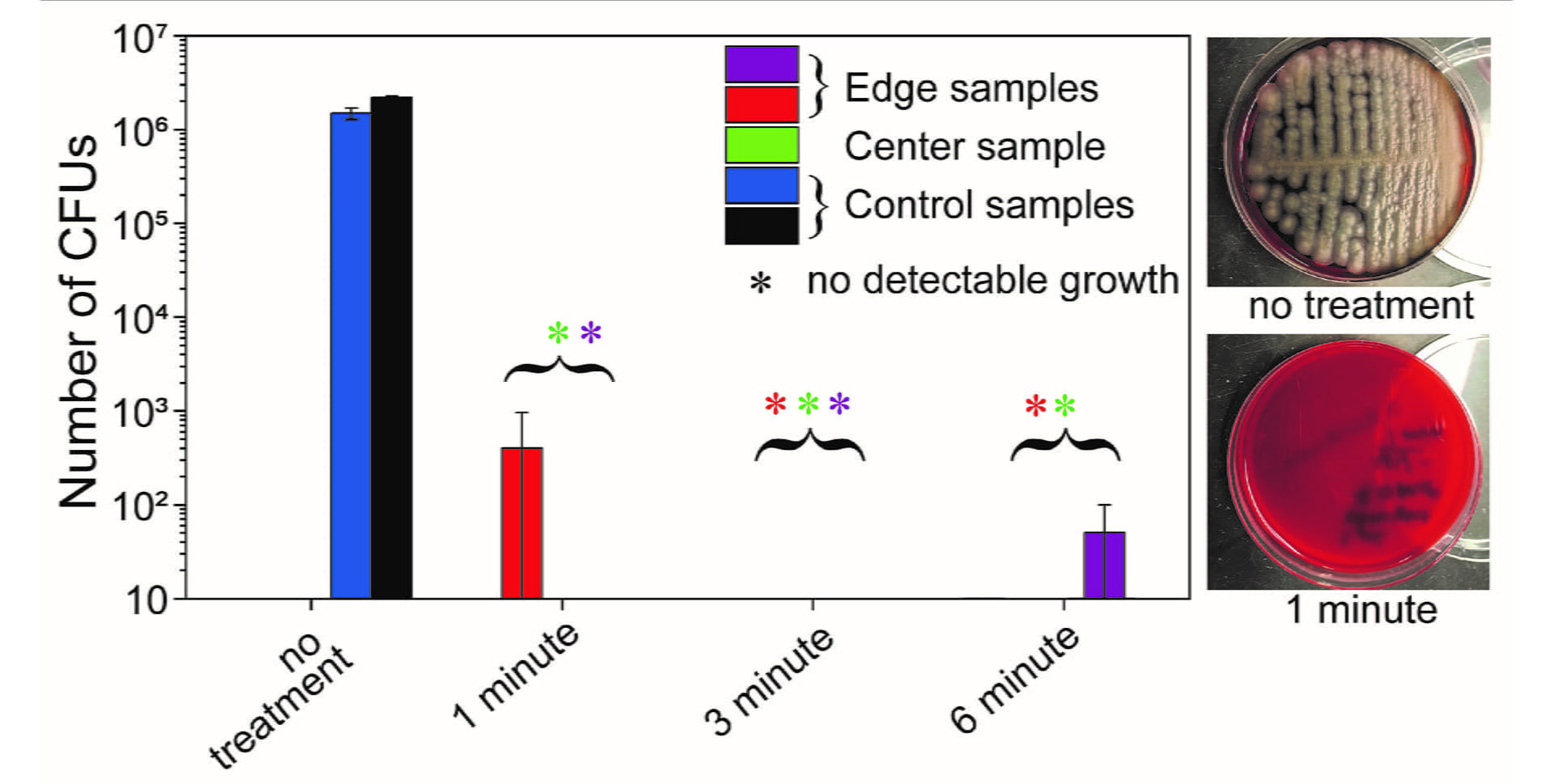 Using a portable UV-C system comprised of a plastic bin and a UVGI light bulb with a spray-painted interior, over 3 log reduction in bacteria growth is achieved. Details in R. She, et al, Biomedical Optics Express, 11 (8) 4326 (2020).
Using a portable UV-C system comprised of a plastic bin and a UVGI light bulb with a spray-painted interior, over 3 log reduction in bacteria growth is achieved. Details in R. She, et al, Biomedical Optics Express, 11 (8) 4326 (2020).
-
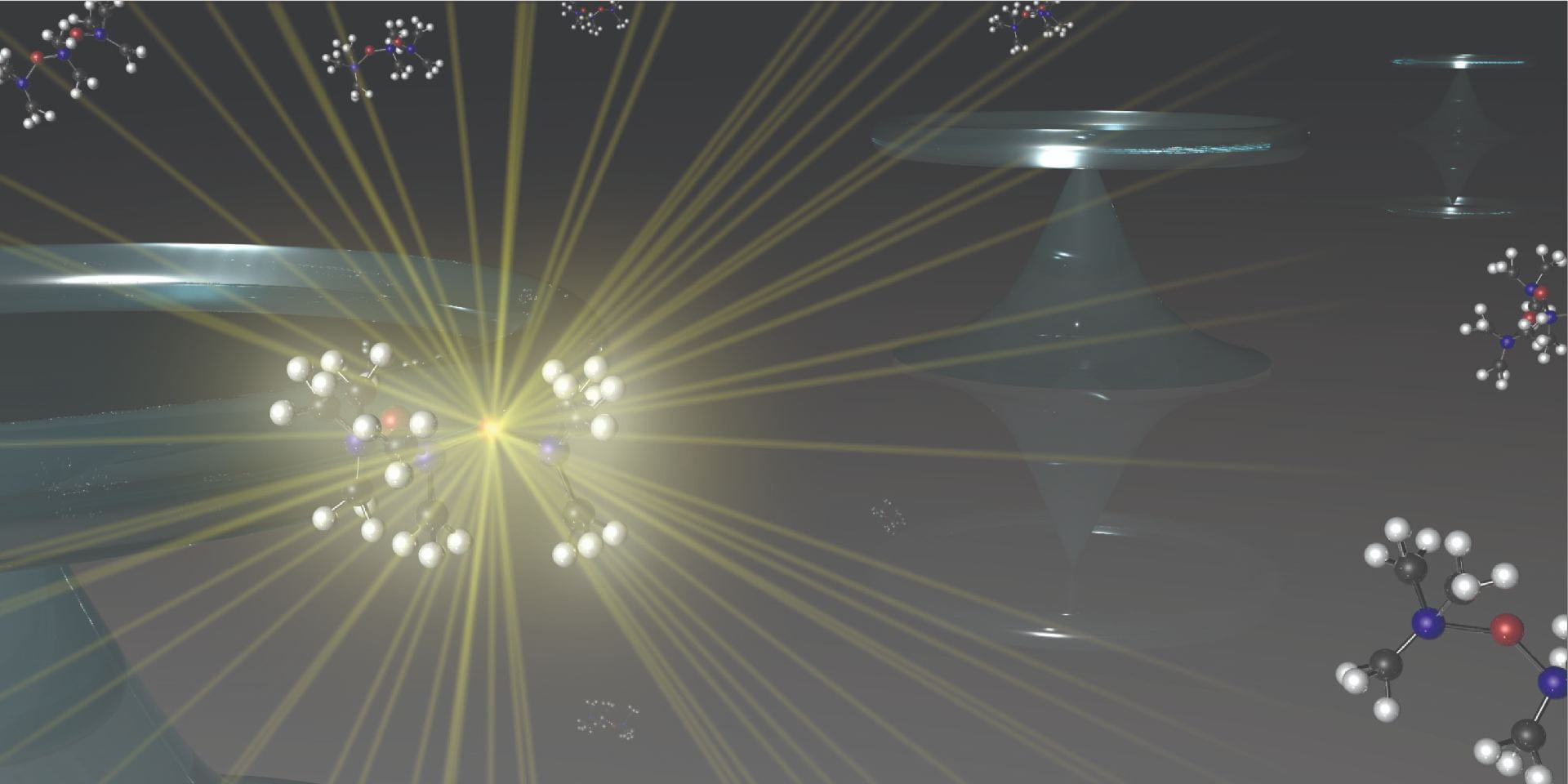 A monolayer of hydroxyl groups can improve the efficiency of Raman lasing by over 10x and reduce the threshold in silica resonant-cavity based lasers. Details in: X. Shen et al, Nature Photonics, 14 95-101 (2020).
A monolayer of hydroxyl groups can improve the efficiency of Raman lasing by over 10x and reduce the threshold in silica resonant-cavity based lasers. Details in: X. Shen et al, Nature Photonics, 14 95-101 (2020).
-
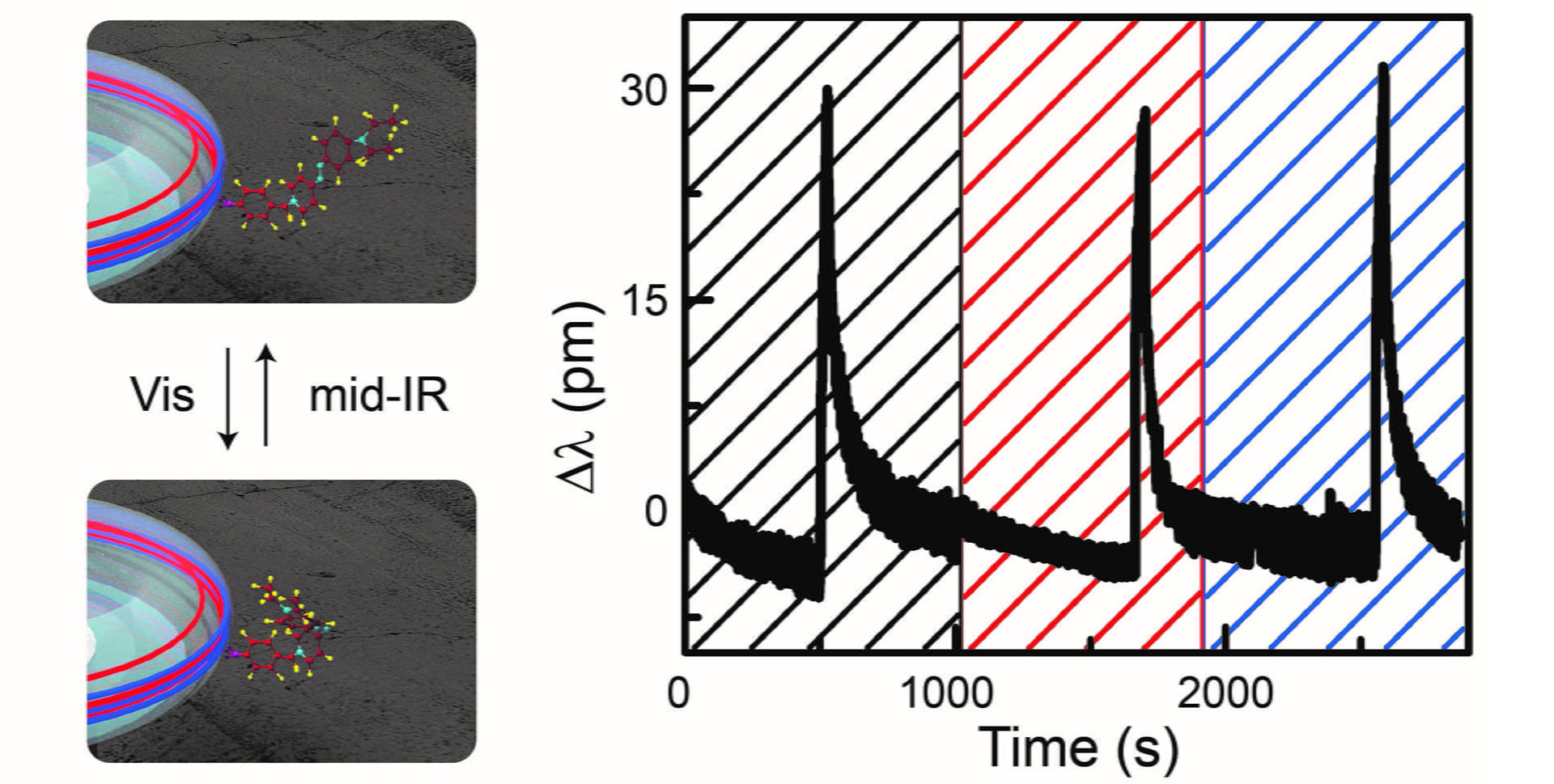 Using the photo-switch Aazo-benzene and a tunable surface chemistry, a reversible, all-optical photoswitch is fabricated and demonstrated. Articles: A. Kovach et al, AIP Advances 10 (4), 045117 (2020). and J. He et al, Optics Express 28 (15), 22462 (2020).
Using the photo-switch Aazo-benzene and a tunable surface chemistry, a reversible, all-optical photoswitch is fabricated and demonstrated. Articles: A. Kovach et al, AIP Advances 10 (4), 045117 (2020). and J. He et al, Optics Express 28 (15), 22462 (2020).
-
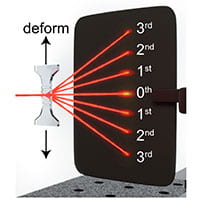 By using a novel optically transparent stereocomplex, a dynamically tunable or deformable optical grating is fabricated and demonstrated. Details in: J. He, A. Kovach, Y. Wang, W. Wang, W. Wu, A. M. Armani, Stretchable optical diffraction grating from poly(acrylic acid)/polyethylene oxide stereocomplex, Optics Letters 46 (21), 5493-5496 (2021).
By using a novel optically transparent stereocomplex, a dynamically tunable or deformable optical grating is fabricated and demonstrated. Details in: J. He, A. Kovach, Y. Wang, W. Wang, W. Wu, A. M. Armani, Stretchable optical diffraction grating from poly(acrylic acid)/polyethylene oxide stereocomplex, Optics Letters 46 (21), 5493-5496 (2021).
-
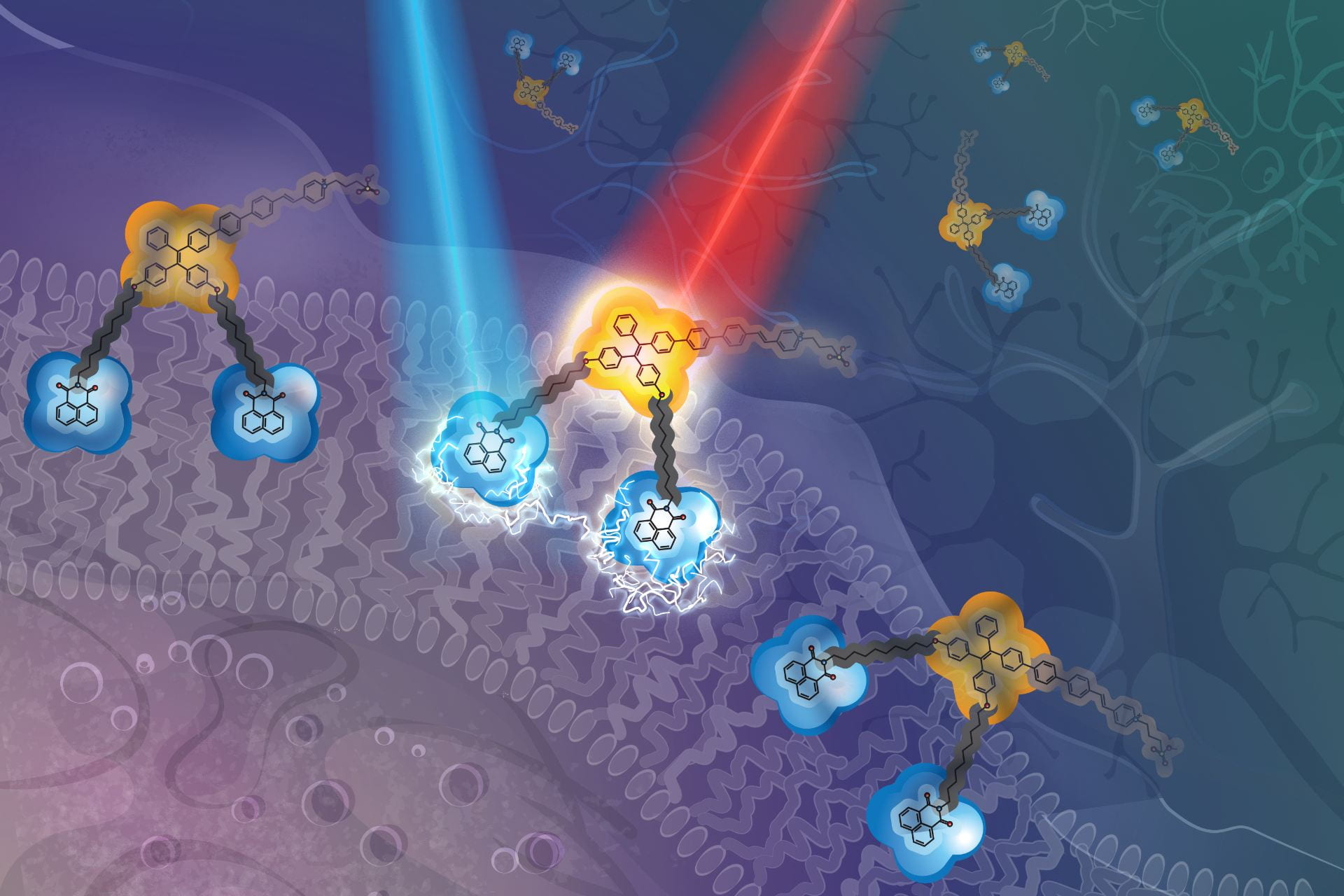 By combining two photoresponsive groups, a dual-modality optical molecular device for writing and reporting electric fields is created. Details in: Y. Zhang*, J. He*, P. Saris*, H. U. Chae, S. Das, R. R. Kapadia, A. M. Armani, Journal of Materials Chemistry C 10, 1204-1211 (2022). available on arXiv
By combining two photoresponsive groups, a dual-modality optical molecular device for writing and reporting electric fields is created. Details in: Y. Zhang*, J. He*, P. Saris*, H. U. Chae, S. Das, R. R. Kapadia, A. M. Armani, Journal of Materials Chemistry C 10, 1204-1211 (2022). available on arXiv
For up to date information, please visit the Ellison Institute.
 Fall 2022 Group Photo
Fall 2022 Group Photo



 By combining two photoresponsive groups, a dual-modality optical molecular device for writing and reporting electric fields is created. Details in: Y. Zhang*, J. He*, P. Saris*, H. U. Chae, S. Das, R. R. Kapadia, A. M. Armani, Journal of Materials Chemistry C 10, 1204-1211 (2022). available on arXiv
By combining two photoresponsive groups, a dual-modality optical molecular device for writing and reporting electric fields is created. Details in: Y. Zhang*, J. He*, P. Saris*, H. U. Chae, S. Das, R. R. Kapadia, A. M. Armani, Journal of Materials Chemistry C 10, 1204-1211 (2022). available on arXiv